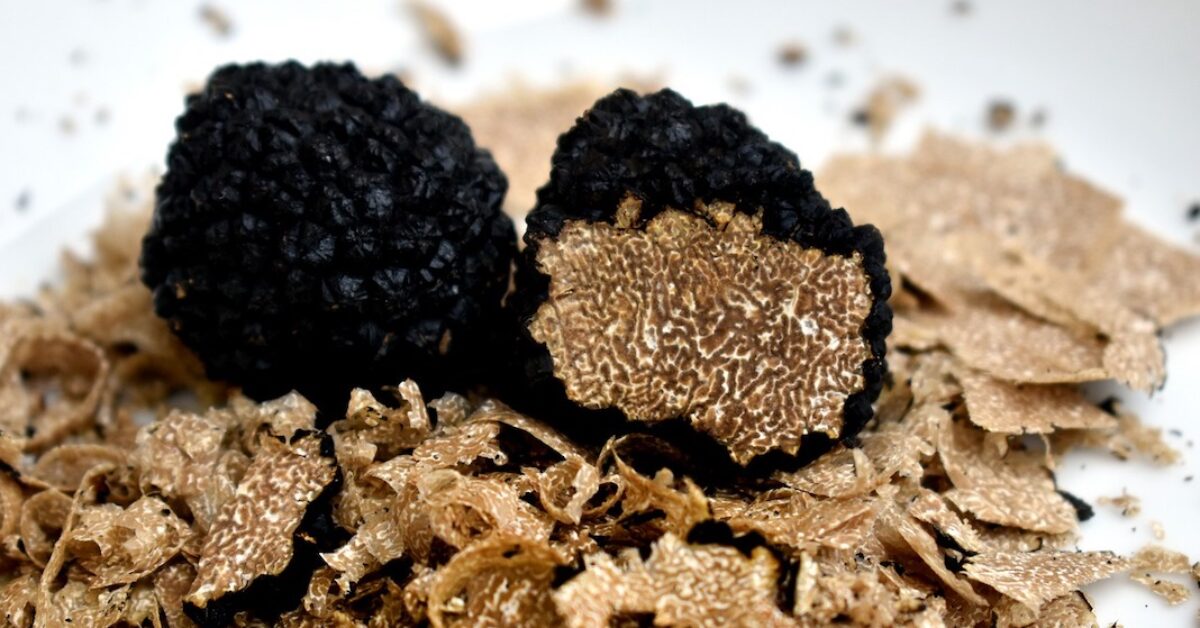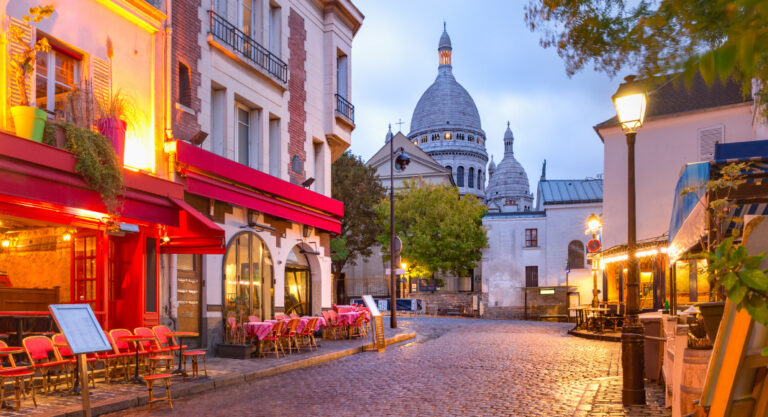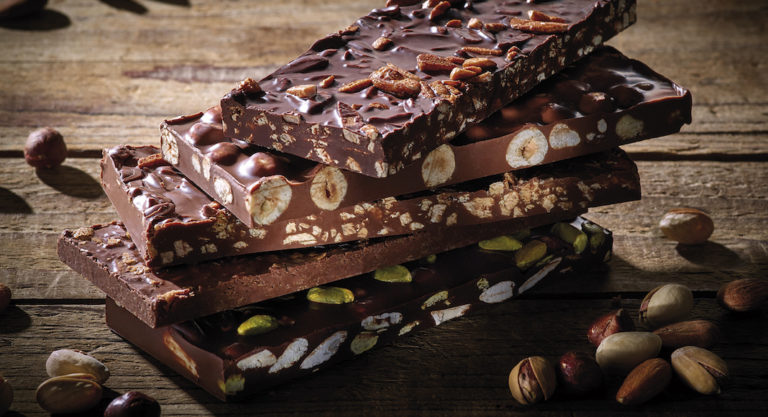On the list of ingredients you might expect to find at a white tablecloth dinner, truffles may be one of the most mysterious and noteworthy. Associated with excess and exorbitant tastes, the truffle commands respect not seen elsewhere in the mushroom community. In honor of peak truffle season, here is some intel on where these mushrooms come from, what they’re used for, and why they’re considered so special.
For starters, truffles are traditionally grown wild in France and Italy, in a symbiotic relationship with certain trees, including filbert (hazelnut) and certain oak trees. Tuber melanosporum, grow in the winter from December through March, peak in January, and produce a smell and taste referred to as musky, earthy, nutty, and gamy, with some even attributing an aphrodisiac quality to them. They are also commonly called Black Truffles, Black Diamond Truffles, or Périgord Truffles, named for the Périgord region of France. Tuber magnatum, or White Truffles, come earlier, from September through December, and are even richer in flavor, generally selling for much higher prices due to their incredibly short season. Both White and Black Truffles can be found in summer as well, though Winter Truffles are more highly prized.
Recently, a burgeoning truffle industry in the U.S. has been shaking things up for the culinary world, with comparisons made to the early days of the California wine industry. Karen Passafaro, President of the North American Truffle Growers’ Association (or NATGA), shared some of her thoughts with us on this new blood in an old industry.
https://www.instagram.com/p/CYCRkMpLO1m/?utm_source=ig_embed&utm_campaign=loading
Where in the U.S. are the biggest truffle-growing success stories happening? Is there a difference between how they are grown in the U.S, and how they are grown in their native France and Italy? Are there other places outside the U.S., France, and Italy where truffle farms can be found? What is the role of terroir in the flavor and value of the truffles produced?
There are successful, producing orchards across the U.S., including Virginia, North and South Carolina, Tennessee, Kentucky, California, Oregon, Washington, and Idaho. There is really no difference in cultivated truffles in the U.S. or Europe. Different species of trees may be preferred due to regional climates, but the trees are all inoculated with the same species of truffle, so the harvested truffles will be identical. Additionally, Spain, New Zealand and Australia have thriving truffle industries that are expanding rapidly. Theoretically a Black Winter Truffle (Tuber melanosporum) is genetically the same in Europe, Australia or the U.S. and should have the same flavor and aroma profile. The role of terroir can impact the value of the truffles as locally grown truffles can command a higher price.
Truffles are traditionally foraged from the wild, but they can be cultivated under the right circumstances. How does this process differ from traditional methods, and how successful and sustainable overall is the truffle cultivation process?
Native truffles are found in some areas of the country but cultivated truffles can be grown in many more areas because you have better control of soil chemistry, orchard management and irrigation. Various species of trees are used depending on the type of truffle to be grown and the climate. Cultivated truffles can take from 5-10 years before the first harvest. When an orchard is planted with good quality inoculated trees and the orchard is well managed (irrigation, pruning, weed control, soil chemistry) an orchard can be successful and sustainable for generations.
While people generally associate truffle hunting with pigs, dogs appear to be more popular companion these days. Why the switch, and which dogs are best suited to searching for truffles?
Pigs are successful hunters, but they tend to eat the truffle. It’s difficult to train them not to eat the truffles, and even more difficult to fight the pig for the truffle. There are old tales of truffle hunters in Italy that were missing a finger or two after years of truffle hunting with pigs. And it’s difficult to transport a large pig to the forest and it’s even more difficult to keep what you are doing a secret, so dogs became the preferred method for truffle hunting. Initially, in Italy it was a breed called the Lagotto Romagnolo, an Italian Water Dog or Italian Truffle Dog, that became well known for truffle hunting. Today many breeds of dogs with a decent nose, good attitude, strong work ethic, and good training can make excellent truffle hunters.
Where do you see the role of North American truffle growing in the global market? Is this a niche project for aficionados, or could there be potential for greater impact in the culinary world?
The North American market is still in its infancy, but there are many new orchards being planted every year and there are new producing orchards coming online every season. The average US consumer is still just learning about truffles, and the interest in fresh truffles and truffle products is increasing exponentially every year. The demand for truffles will continue to outpace the supply, creating a very ripe market for truffles in the U.S. Right now, many U.S. consumers are buying truffles from Europe and Australia, but when U.S. truffles are available, culinary enthusiasts will prefer to buy fresher, locally grown truffles. As the supply of cultivated truffles expands in the U.S., there is the opportunity for the interest in truffles to expand well beyond culinary experts and aficionados as home chefs develop a passion for truffles.
What is the average price of a truffle, and does it vary greatly across countries? When I purchase a truffle in the U.S., where is that truffle most likely coming from?
Retail prices for fresh Black Winter Truffles (Tuber melanosporum) can range from $80-120 per oz or $1200-2000 per pound depending on quality, freshness, and location. A truffle importer should be labeling the type of truffle and where the truffle was grown. U.S. Truffle Growers will be labeling fresh truffles with the exact truffle species (both Latin and common names), the region where the truffle was grown, the date it was harvested and the class or quality of the truffle.
Can you explain the difference between winter, summer, black, and white truffles?
Using only simple descriptions such as winter or summer or black and white can be very confusing and potentially misleading. That is why the North American Truffle Growers Association (NATGA) is supporting product labeling that uses both scientific or Latin names as well as common names for different truffle species. NATGA believes that well defined and clear labeling will help to educate US chefs and consumers. [More information on truffle species can be found here.]
Finally, what is the best way to make use of truffles? What are the best foods to pair them with, and should different truffles be used for different dishes?
Truffles are especially soluble in fat, so adding truffles to butter, eggs, cream, and cheese are excellent ways to really highlight the truffle aroma. In fact, you can place fresh truffles in a sealed container with fresh eggs, butter, bacon, even avocados and the truffle aroma is so powerful that it will be infused directly into the raw ingredients. After infusing ingredients with truffles, the truffle is best used shaved or grated on top of the finished product, to highlight the aromas. The types of truffles used for different dishes can vary based on individual tastes and preferences and chefs may have strong opinions about what works best for different truffles. There is strong agreement that pasta, eggs and cheese provide an excellent palette for the magic of truffles. A great resource is the book, Cooking with Truffles: A Chef’s Guide.






